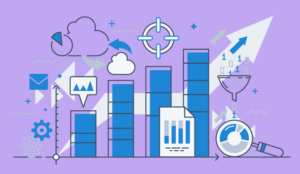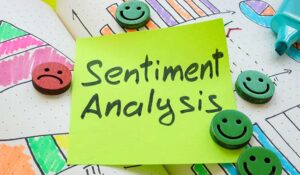Getting ahead of employee behaviours before they become an issue can be a key skill, but it is important to have structured conversations with agents when discussing an Early Warning System (EWS) alert or conducting a RAG Analysis with an employee.
But what should be included in these discussions?
Mithesh recently asked our Community of industry professionals about this, and we wanted to share their answers with you:
What are all the points need to be discussed with employee during Early Warning System (EWS) or RAG analysis.
I want to publish an attrition early warning system report in which I want to know the points need to be discussed with employee to know the pulse of employee.
Know the Difference Between EWS and Rag Analysis
What is EWS?
EWS stands for Early Warning System, and refers to a set of tools, processes, or systems designed to monitor and detect potential issues before they fully develop.
It is a proactive monitoring tool designed to detect potential issues or risks in real-time, allowing the management to take corrective actions before these issues escalate into larger problems.
The primary goal of an EWS in a contact centre is to maintain high service levels, ensure customer satisfaction, and optimize operational efficiency.
What is RAG Analysis?
RAG Analysis in a contact centre context is specifically applied to monitor and assess the performance and health of various aspects of contact centre operations.
It uses the Red, Amber, and Green (RAG) colour coding to represent different levels of performance or risk
- Red – Indicates that performance is significantly below expectations or that a critical issue has been identified.
- Amber – Represents a warning that performance is not optimal and might deteriorate further if not managed carefully.
- Green – Signals that performance is on track, meeting or exceeding expectations.
RAG Analysis is primarily a reporting and assessment tool used to provide a snapshot of the current status of different metrics or performance areas.
It’s a way to communicate where things stand at a given moment, often used in regular reporting to management.
The Relationship Between RAG Analysis and EWS (Early Warning System)
While RAG Analysis and EWS might seem similar, they serve slightly different purposes:
RAG Analysis can be part of an EWS. For instance, if the EWS detects that a particular metric is deteriorating (say, an increasing number of absences), this might be flagged as Amber or Red in a RAG report, prompting further investigation or action.
To put in another way, RAG Analysis is a visual tool for summarizing current performance levels, while EWS is a system for detecting and addressing issues early on.
Both are valuable for maintaining high standards in a contact centre or BPO, but they operate at different stages of the monitoring and management process.
What to Include in an EWS Alert and / or RAG Analysis
When discussing an Early Warning System (EWS) alert or conducting a RAG Analysis with an employee, it’s essential to have a structured conversation that not only addresses the current performance issues but also identifies actionable steps to improve.
As a general rule you need to cover the following areas with an employee during these discussions:
1. Current Performance
Review specific metrics or KPIs that have triggered the EWS alert or RAG status (e.g., attendance, call handling time, customer satisfaction, quality scores).
Then you need to compare the employee’s current performance against their targets.
2. Issues That Have Been Identified
Look at possible root causes for the performance shortfall. Is it due to lack of training, external factors, personal issues, or process inefficiencies?
Then determine if there is any patters to identify if this is a recurring issue or a one-time occurrence. Look for patterns in performance dips.
3. Get Employee Feedback
Encourage the employee to share their perspective on the situation. They may have insights into challenges they are facing, such as difficult customer interactions, system issues, or unclear processes, ask for their suggestions on how to improve the situation.
4. Create an Action Plan
Working with the employee develop an action plan to address the issue that includes a set of actions the employee can take to improve performance. This might include additional training, time management strategies, or changes in work processes.
Make sure you include in this details of any additional support the employee might need to succeed, such as mentoring, updated tools, or adjustments in workload.
As part of this action plan set a timeframe to achieve these goals, and break them down into immediate, achievable goals to address the issues identified, and longer-term performance objectives and how they align with the employee’s career development.
5. Follow Up and Monitor
Schedule and conduct regular follow-up meetings to review progress and make adjustments to the action plan if necessary, making sure you explain how the EWS or RAG metrics will continue to be monitored and how this will impact future assessments.
6. Document and Set Consequences
Make sure you explain the positives of improvement, (such as career growth, recognition, or incentives), but also clearly explain any potential consequences if the performance does not improve, such as formal performance improvement plans (PIPs) or other disciplinary actions.
Ensure that the discussion points and agreed-upon action steps are documented, to allow you to track their progress and maintain transparency.
It may also be worth aligning the performance improvement plan with the employee’s career aspirations, ensuring that they see personal growth opportunities in improving their performance.
You should tailor these points to the discussions you want to have around individual issues (such as attrition) , but by using them as a guideline and ensuring regular follow up you can ensure your conversations will be thorough, supportive, and constructive.
Contributed by: Robyn
A Few Factors an Advisor Can Influence
I’m not sure what things you are looking to do but here are a few factors that an advisor can influence:
- Quality Scores
- Attendance
- Schedule Adherence
- Empathy
Do not use AHT, Occupancy or FCR as an agent targets/ measures as these are factors that the advisor cannot directly influence.
Contributed by: Jonty
This article was made possible due to the great community of experts we have at Call Centre Helper, to get involved just join our LinkedIn Community and and if you aren’t already make sure you are following us on LinkedIn to see our latest content.
If you are looking for information on measuring and reducing contact centre attrition, read these articles next:
- What is Attrition Rate and How to Calculate It
- 46 Tips for Managing Absence
- Top 20 Ways to Reduce Attrition Rates in Your Contact Centre
Author: Jonty Pearce
Reviewed by: Hannah Swankie
Published On: 12th Apr 2022 - Last modified: 3rd Oct 2025
Read more about - Call Centre Questions, Call Centre Answers, Employee Feedback, Team Management





































